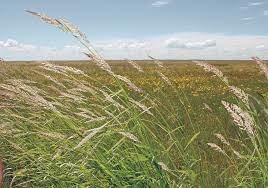A major panel of the Wildlife Board will decide how to preserve grasslands
The national board for wildlife’s standing committee will make a decision on how to protect the nation’s rapidly diminishing grasslands.

At least three members of the standing committee informed the panel led by Bhupender Yadav, the union environment minister, that grasslands, which are not classified as forests and are not protected as such but are home to important animal species, are in danger.
“Grasslands are home to the greatest number of endangered species, including the Great Indian Bustard, Lesser Florican, Caracal, and others. The deterioration and loss of habitat have the most negative effects on grassland ecosystems. If the preservation of these ecosystems is not prioritized, it would be too late, said HS Singh, a former principal chief conservator of forests (PCCF) and member of the NBWL, before the panel on August 29.
Members noted that although the Ministry and the States both have administrative frameworks for the protection of the habitats of bigger faunal species like tigers, elephants, wetlands, reefs, mangroves, etc., there is none for grasslands.
Over 100 million hectares of grasslands are degraded, according to the Indian Grassland and Fodder Research institution, Jhansi, a national institution under the jurisdiction of the Indian Council of Agricultural Research, stated Member Secretary of NBWL Bivash Pandav.
“Many natural grasslands have either been lost or degraded due to agricultural expansions, overgrazing, large areas being converted to plantations/protected areas/Industrial establishment,” he said.
The Banni in Gujarat, the Shola in the Western Ghats, the Thar desert in Rajasthan and Gujarat, the Terai, and Kangeyam in Tamil Nadu are the five ethnic grasslands that have been present in the nation for generations.
According to the existing grasslands, the Indian Council of Forestry Research and Education (ICFRE), Dehradun, has recommended a site-specific GIS plan. Pandav, a member secretary, suggested that the Indian Forest Survey Report (IFSR) take into account include a unique and independent chapter on grasslands in its biannual report.
“This would make it possible to generate real-time data on these ecosystems, providing a more thorough and current assessment. “There is a proposal to establish a dedicated cell specifically tasked with the responsibility of overseeing and addressing issues related to these ecosystems in order to improve our efforts to preserve and manage tropical grasslands,” he added.
Another participant, Professor R Sukumar from the Indian Institute of Science, said that widespread planting operations and weed invasion, especially in the Western Ghats, had caused major harm to grasslands.
The standing committee resolved that the environment ministry should host a workshop on grassland protection and solicit input from professionals. The standing committee will then be presented with the workshop report.
Because the Center notified the Forest Conservation Amendment Act 2023 on August 4, the concern over protecting grasslands and other ecosystems is of particular importance. Unrecorded considered woods are excluded from the revised legislation on forest protection, which is one of the new law’s problematic elements.
TN Godavarman v. Union of India, a 1996 Supreme Court decision, had a significant impact on forest governance in India by widening the scope of the forest conservation statute by interpreting the term “forest” in accordance with its dictionary definition. The December 1996 judgment said that forests would encompass any land listed as a forest in official records, regardless of ownership, as well as forest as understood in the dictionary meaning. This gave hope for the recognition of biologically rich terrain, such as meadows, so-called wastelands, scrub forests, etc., which needed to be conserved since they were important natural characteristics but were not classified as forests in official records.
However, according to the FC Amendment Act, it will recognize land that has been designated or notified as a forest in line with the Indian Forest Act of 1927 or under any other legislation. It will also acknowledge property that is not legally recognized as forest but has been listed as forest in official documents as of or after October 25, 1980. This clause’s requirements do not apply to land that was converted from a forest to a non-forest use on or before December 12, 1996.
Grassland species are at danger from a number of factors, such as changing land use and overhead powerlines. According to a March article from HT, the Central Electricity Authority’s draft notification regarding the construction of electric lines through the habitat of the critically endangered Great Indian Bustard in Gujarat and Rajasthan has raised concerns because it may put the species, of which fewer than 100 are left in existence, in danger.







